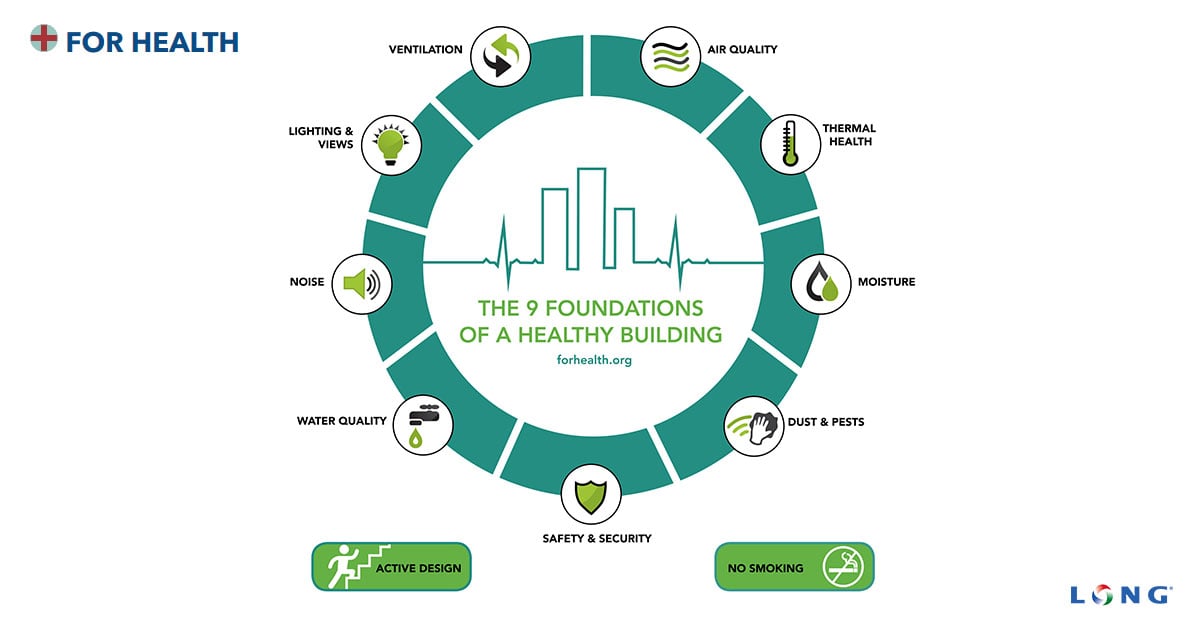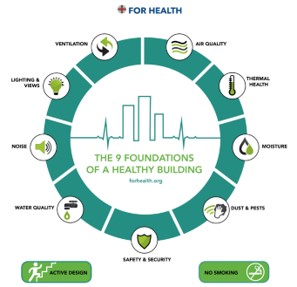
There is a harmful misconception that influences the evaluation of commercial buildings – for both owners and tenants.
For tenants looking to occupy a building, like the one you’re sitting in, there are common factors to consider. Location, utility, aesthetics, amenities, and type of lease are all critical. Whether the space affordably meets the business’ needs is generally the most important factor. We can call this “rent value,” and if it’s high, it can be a good reason to choose a given building.
There are similar factors for investors looking to buy and sell buildings. The building’s location, use, initial cost, and the buyer’s strategy all play a role, but whether or not the building makes money is generally the most important factor. This is Net Operating Income, or NOI. If an owner can earn more money on rent than he or she spends on operations, that’s positive NOI…and one of the main reasons to make an offer.
Here’s the unpleasant part: the health and productivity of the people inside, the ones like you, may not be an aspect of that conversation. This is due to the misconception held by many investors that NOI and rent value are the most important ways to evaluate buildings, and it’s been making us sick for decades. Literally.
According to Joseph Allen et al.: “Building-related illnesses and sick building syndrome (SBS) were first reported in the 1980s as ventilation rates decreased (Riesenberg and Arehart-Treichel 1986), with significant annual costs and productivity losses due to health symptoms attributable to the indoor environment (Fisk and Rosenfeld 1997)." Allen and his team at Harvard designed a study to “objectively quantify the impact of indoor environment on higher-order cognitive function.” If you work in a conventional office building, spoiler alert: it’s not good. The full results are can be seen here: https://ehp.niehs.nih.gov/doi/10.1289/ehp.1510037.
Looking specifically at carbon dioxide, the study “found statistically significant declines in cognitive function scores when CO² concentrations were increased to levels that are common in indoor spaces (approximately 950 ppm).” Though this level would satisfy the long-standing ASHRAE guideline of 1000 ppm CO² for properly ventilated buildings, it is shown to slow our brains. And ventilation is only one of the nine foundations of a healthy building identified by Allen’s Healthy Buildings Program.
The nine foundations are:
They are described in more detail here: https://9foundations.forhealth.org/.
Interestingly, the nine foundations listed do not include NOI, rent value, or any of the financial metrics which have traditionally guided decision-making around commercial buildings. This might seem to create a tension between financial and health considerations, but this would also be a misconception.
Pragmatically, it is not reasonable to supplant NOI and rent value as the primary factors by which we evaluate building spaces. However, it is possible to understand the financial profile of a building in terms of human factors. In relation to tenants, there is a well-known principle called the 3-30-300 rule. It was codified by agents with the real estate giant JLL to help tenants appropriately factor in the productivity of humans working in a given space.
“The 3-30-300 rule illustrates the average order of magnitude between a company’s costs for utilities, rent and payroll (all per square foot, per year).
For example, where a 10% increase in energy efficiency would yield $0.30 savings per square foot and a 10% decrease in rent would save $3.00, a 10% gain in productivity is worth $30.”
Looking primarily at the rent per square foot is not a good long-term strategy. For tenants to evaluate a space with the nine foundations, keeping 3-30-300 in mind can dramatically influence the way it is valued. But how? How could a prospective tenant quickly and effectively evaluate these health factors? If healthy buildings are to be a goal, how can an investors’ and owners’ purchase be efficiently vetted with regard to health factors? And how should capital be invested to get the best results moving forward?
The first step is to look at the building controls. Without updated digital controls, it is highly unlikely the building will provide a positive experience. While modern Building Automation Systems (BAS) can be complex, it is worth the time to understand how a building is performing. Updating these controls is, in many cases, the best use of capital investment.
The BAS primarily controls the second critical factor, HVAC equipment. Often this equipment, such as Rooftop Units, Boilers, and Chillers, is given a look by investors primarily because they can be expensive and difficult to replace. A professional rep for a top manufacturer is the person most likely to have good information about what’s needed and what it will cost. Remember that ventilation, air quality, and temperature and moisture control are all influenced by dollars spent here.
Thirdly, the maintenance of these two components is often undervalued by both tenants and owners. As sensors and digital dashboards improve, investing in quality service agreements can yield both energy savings and health benefits in a cost-effective way.
Building owners and tenants who want the best experience possible would be well served consulting with a professional group who sells, installs, and maintains both equipment and controls. LONG Building Technologies is this type of group. LONG can also coordinate LED lighting conversions, water saving measures, and provide access control.
It is even possible to use C-PACE funding to limit the up-front costs required to make these human health-related updates. C-PACE is a lending program that aligns the health and financial interests of both tenants and owners by allowing updates to be paid for over 20 years. It also allows, in many cases, for the costs to be shared by the tenants who benefit from the improvements.
Allen, Joseph G., Piers MacNaughton, Usha Satish, Suresh Santanam, Jose Vallarino, and John D. Spengler. “Associations of Cognitive Function Scores with Carbon Dioxide, Ventilation, and Volatile Organic Compound Exposures in Office Workers: A Controlled Exposure Study of Green and Conventional Office Environments,” Environmental Health Perspectives 124, no. 6 (1 June 2016): doi:10.1289/ehp.1510037
Riesenberg DE, Arehart-Treichel J. 1986. “Sick building” syndrome plagues workers, dwellers. JAMA255:3063, doi:10.1001/jama.1986.033702200210053702012
Fisk WJ, Rosenfeld AH. 1997. Estimates of improved productivity and health from better indoor environments.Indoor Air. (3):158-172, doi:10.1111/j.1600-0668.1997.t01-1-00002.x
“A Surprising Way to Cut Real Estate Costs.” JLL, September 25, 2016, https://www.us.jll.com/en/trends-and-insights/workplace/a-surprising-way-to-cut-real-estate-costs

Justin Mouttet is a Sales Engineer for HVAC Equipment in Colorado.
We are always looking for bright, ambitious new team members. Join Team LONG today!